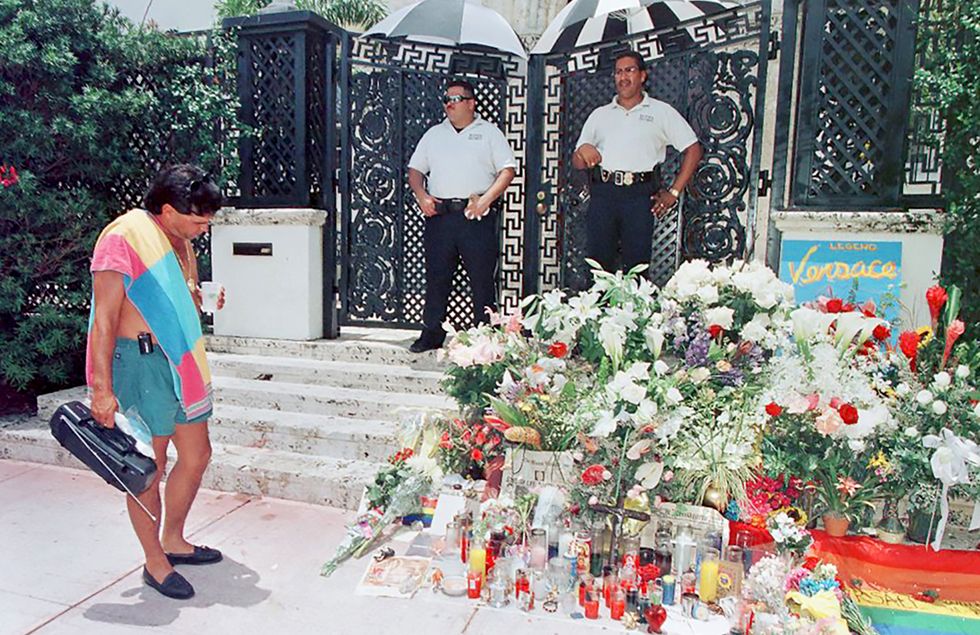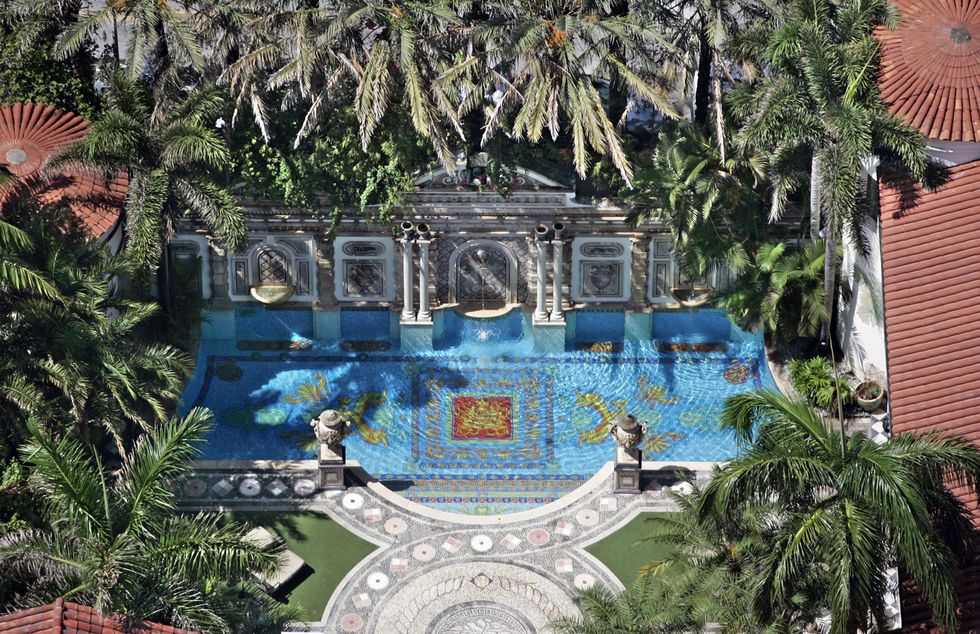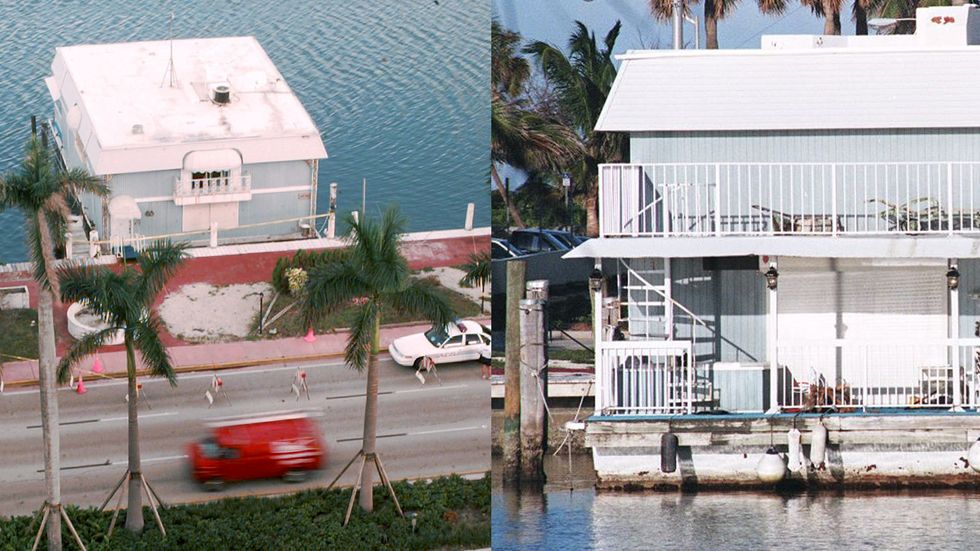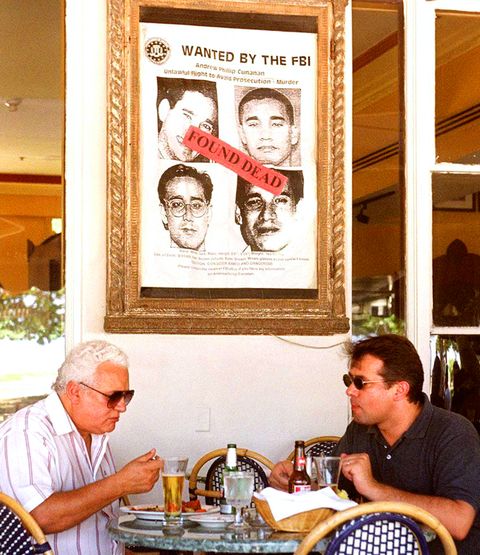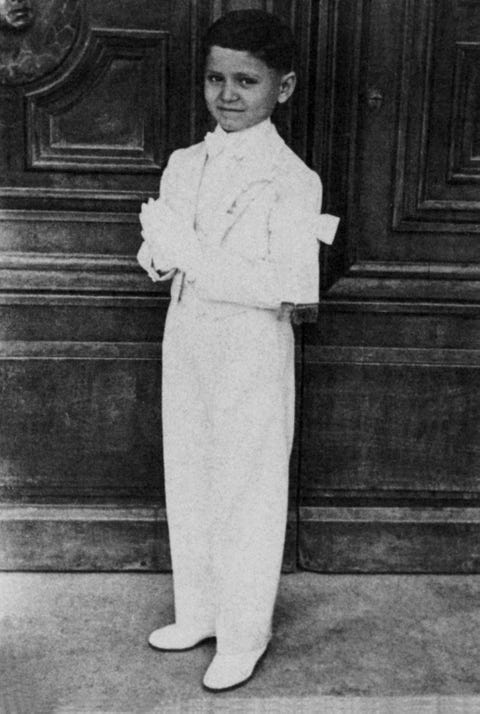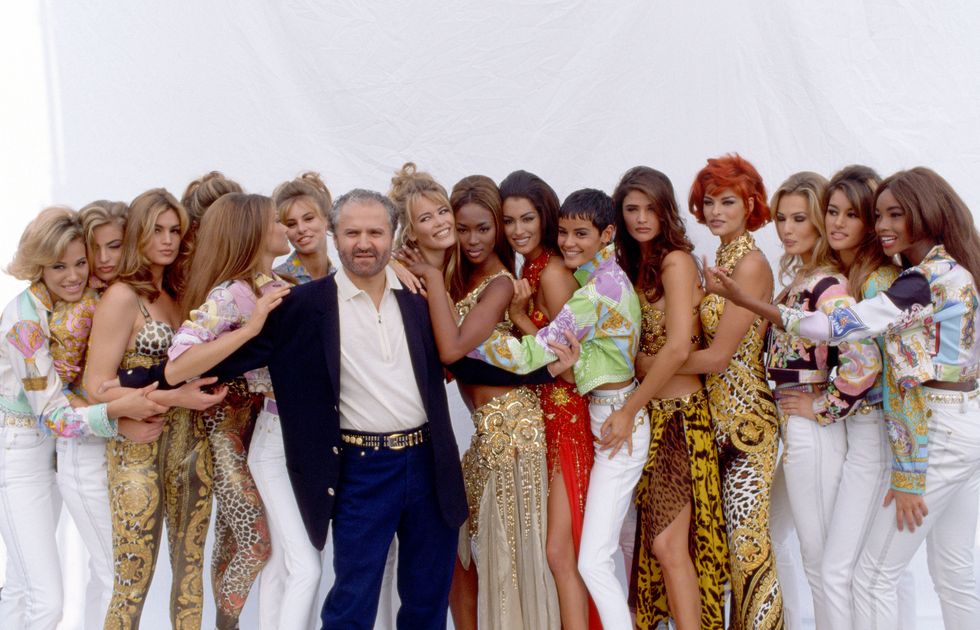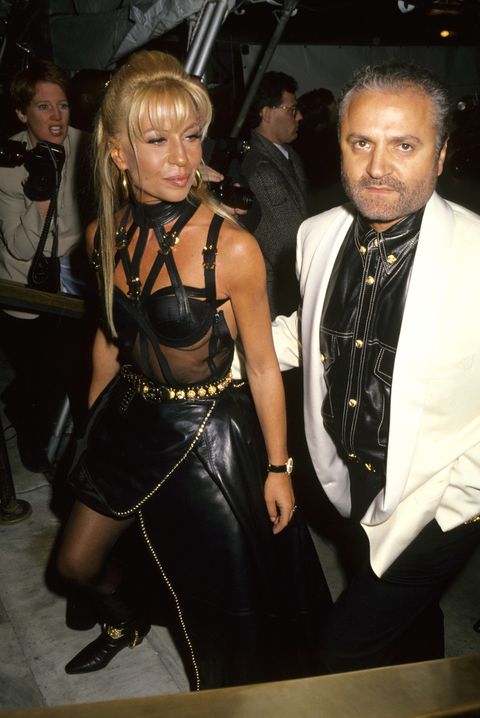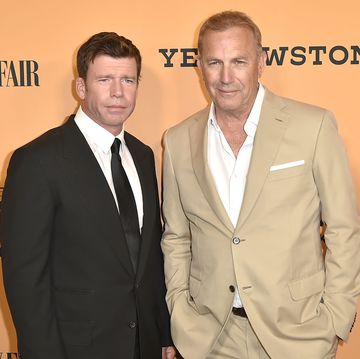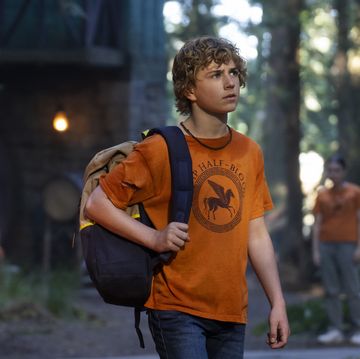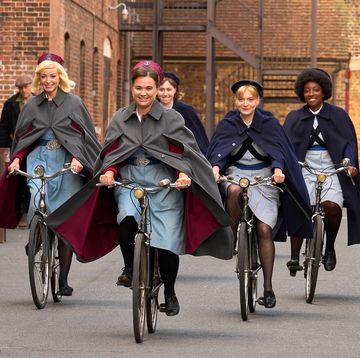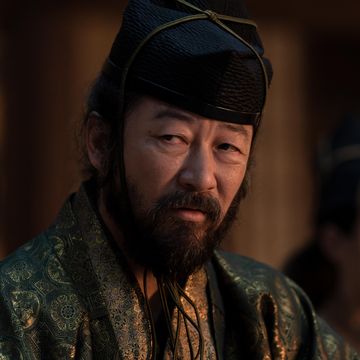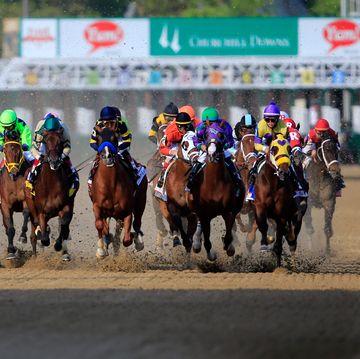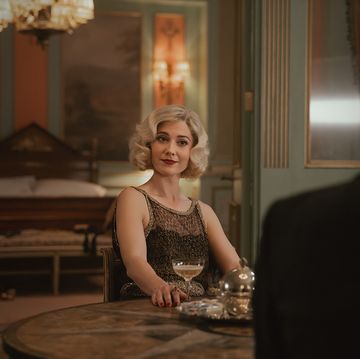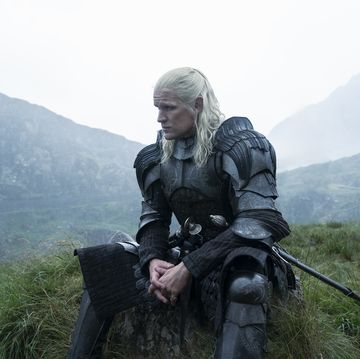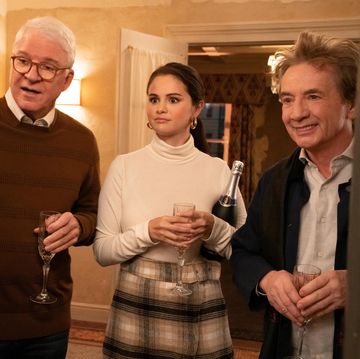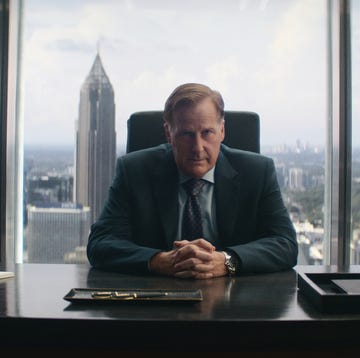Twenty years ago, South Beach, Florida was not a place that catered to early risers. It was a beach-cavorting, nightclub-dancing, hedonistic scene ruled by a fashion crowd of models, musicians, actors, and bohemians—so long as said bohemian looked good on Rollerblades wearing a G-string. But within this indolent world there were driven, ambitious people, and none more so than the unofficial mayor of South Beach himself: designer Gianni Versace. On the morning of July 15, 1997, the 50-year-old Italian founder of a glamorous fashion empire was up by 6 a.m. He made calls to Milan, did some more work, then slipped out of his mansion and headed to News Café, just three blocks from his home.
A regular at the buzzy Ocean Drive restaurant, Versace bought a coffee, exchanged greetings with the manager, scooped up issues of Vogue and The New Yorker, and headed back to Casa Casuarina, the opulent palatial villa he’d spent millions acquiring and renovating. He walked up five marble steps and slipped his key into the lock on the iron gate.
At that precise moment, a dark-haired man wearing knee length shorts, a gray tank top, a baseball cap, and a backpack surged up the same marble steps.
Andrew Cunanan shot Gianni Versace, twice, execution-style. Then he turned around and casually walked away. Cunanan, 27, described by his own mother as a “high class homosexual prostitute,” was already a wanted man—a suspect in four murders in three states—and had gone into hiding in Miami more than two months earlier. Police soon identified him as Versace’s murderer, and the frantic hunt for a man the media called a serial killer dominated the news cycle.
While the police combed the Miami area, Versace’s shattered siblings, Donatella and Santo, flew in from Milan. They claimed Gianni’s body and returned to Italy, where, on July 22, 1997, one week after his murder, Versace was given a funeral fit for a prince at the Duomo, Milan’s soaring 14th Century cathedral.
With camera crews fighting for space outside, more than 2,000 people filed into the memorial, many of them wearing Versace: Naomi Campbell, his favorite model; Anna Wintour and Karl Lagerfeld, his champions in the fashion industry; and Princess Diana, his most famous client. Elton John and Sting, his closest celebrity friends, closed the service with an emotional rendition of "The Lord is My Shepherd," a psalm chosen by Versace’s team. As the song concluded, the sounds of weeping echoed throughout the church.
The gunshots that ripped the sultry quiet of Ocean Drive that day have, in certain ways, never gone completely quiet. In its fusion of pitiless violence with the exclusive, rarified world of celebrity—an act that showed in an instant how defenseless the rich and famous can be—the crime has had nearly the same cultural impact as other high-profile murders, like that of Sharon Tate in 1969 by Charles Manson’s “Family" and the deaths of Beverly Hills couple Jose and Kitty Menendez in 1989.
But these horrific acts have motives attached to them, as psychotic and savage as those motives may be. In the case of Versace, however, the “why” has remained an mystery. Cunanan told not a soul his reasons for killing Versace and wrote nothing down. Rumors raged that he had gone on a killing spree to find out who infected him with HIV. However, an autopsy revealed that Cunanan didn’t have the virus. (Versace’s family members have always maintained that the designer did not have HIV.)
On July 23, 1997, less than two weeks after Versace was killed, the body of Andrew Cunanan was found in a houseboat off Miami Beach. He’d shot himself in the head with the same gun used to take the lives of three of his victims, including Versace. Cunanan’s suicide brought an end to the nationwide manhunt, but it marked the beginning of a two decade-long search for answers.
The forthcoming FX television series The Assassination of Gianni Versace—a second installment of Ryan Murphy’s American Crime Story franchise—will attempt to fill in the gaps of this crime, shedding light on both the why and the how. Murphy is fascinated not only by the glittery world of Versace, but by the cultural forces that shaped Cunanan and made it difficult to track his killing spree.
“He wasn’t caught because he was targeting gay people, and people didn’t care,” Murphy told Entertainment Weekly. “The more I had read about it the more I was startled by the fact that [Cunanan] really was only allowed to get away with it because of homophobia.”
It’s not as though law enforcement didn't try. Police forces in Minnesota, where the first two men were killed, and Chicago, the site of the third murder, threw all possible manpower into investigating Cunanan’s crimes and trying to locate him. Even before he had resurfaced in Miami, the FBI put Cunanan on their Ten Most Wanted Fugitives list, and the top-rated series America’s Most Wanted, dedicated an entire segment to the case.
Ever since he committed his string of horrific murders, the life of Andrew Cunanan has been studied for clues. He did not seem destined for criminal infamy. Cunanan came from a middle-class San Diego family. His father was a Philippines-born stockbroker of varying success and his mother an Italian-American homemaker who reportedly suffered from mental illness.
Cunanan’s most formative influence may have been the elite Bishop’s School in La Jolla, which he attended from 1981 to 1987. His parents struggled to pay the private school’s tuition, mortgaging their home so their youngest child could attend. Cunanan hid his true background from his classmates, and hinted that he came from privilege, even royalty. He made no secret of being gay while in high school and cultivated an outrageous, carefree persona of rich bad boy.
“Although Bishop’s strove to be nurturing, it only intensified Andrew’s underlying anger and already well developed penchant for pretending to be someone he was not,” wrote journalist Maureen Orth in her book Vulgar Favors: Andrew Cunanan, Gianni Versace, and the Largest Failed Manhunt in U.S. History, which served as the key source for the forthcoming TV series. (In a recent statement, the Versace family has made it clear that they believe Orth's book to be "full of gossip and speculation" and Murphy's series to be "a work of fiction.")
Despite Cunanan’s reportedly high IQ of 147 (statistically higher than 99.9 percent of the population) his grades were not stellar at Bishop’s. After graduating, he enrolled at the University of California, San Diego, but quickly dropped out, befriending rich older men to pay for his rent, clothes, club-hopping, and travel expenses. He reportedly became addicted to drugs—cocaine and methamphetamine—and sadomasochistic pornography.
In late 1996, after a wealthy older boyfriend cut him off (the man had supposedly grown annoyed by Cunanan’s nagging for a Mercedes), Cunanan began to spiral out of control. He left California in April 1997 and bought a one-way ticket to Minneapolis, where he said he planned to "take care of some business" with two friends. Those friends—Jeff Trail, a Gulf War veteran, and David Madson, a successful architect whom Cunanan had briefly dated—would ultimately become his first victims.
He beat Trail to death with a claw hammer in Madson’s apartment and rolled the body up in a rug. When Madson came home later that day, Cunanan appeared to have held him captive; Madson was found dead several days later with gunshot wounds to the head.
Cunanan, who had somehow gotten Trail’s .40 caliber weapon, drove to Chicago next. Within a week, the body of Lee Miglin, a wealthy 72-year-old real-estate developer, was found in his home, horribly bludgeoned and stabbed, with unmistakable signs of torture. Cunanan’s callousness had become extreme: after the murder, Cunanan reportedly went into the kitchen and made himself a ham sandwich. Then, he stole Miglin’s Lexus and hit the road. Miglin’s family has remained adamant that the married father never knew his assailant.
A manhunt for Cunanan ensued. When it was reported that police were tracking him through the car phone in his stolen vehicle, Cunanan, who by now had made his way to New Jersey, allegedly heard the news on the radio. He ripped out the phone, but knew he’d need another car—so he pulled into a cemetery parking lot and shot William Reese, a facility caretaker, before stealing the man’s red pickup truck. Then Cunanan disappeared.
One of the most striking aspects of Andrew Cunanan’s life is that while he was interested in art, fashion, literature, and travel—his dead body was found next to a stack of magazines, including Vogue—he never at any time tried to work at a career that would put him in those worlds legitimately.
He was, in this respect, the opposite of Gianni Versace.
On December 2, 1946, Gianni Versace was born in Reggio Calabria, the tip of Italy’s “boot,” the son of an appliance salesman and the village seamstress. He wasn’t much interested in classroom instruction. The place he wanted to be was his mother’s workshop, where Franca Versace made beautiful wedding dresses for the brides of their community.
“Why don’t you go out and play with your friends?” Franca asked Gianni, according to the book House of Versace by Deborah Ball. He responded: “I don’t want to. I want you to show me how you make the clothes.”
By his mid-twenties, Versace was in Milan, the hot new epicenter of fashion, earning six figures a year as a designer. His first collection was shown on March 28, 1978, at the Permanente, a contemporary art museum. He became the darling of Milan with his provocative clothes, igniting a bitter rivalry with Giorgio Armani. The saying went “Armani dresses the wife, Versace dresses the mistress.”
“Not only was he a brilliant designer, he was a brilliant marketer… he was the first to bring the celebrities into the front rows,” recalled Vogue editor-in-chief Anna Wintour in a Dateline interview shortly after his death. “He was the first to use actresses and rock stars in his advertising campaigns. He understood the importance of getting his name and his image out there on a global level.”
Versace became one of the most famous designers of the era, and is credited with creating the phenomenon of the supermodel. He made stars of Linda Evangelista, Christy Turlington, and his runway-show favorite, Naomi Campbell. Even more than that, his aesthetic offered a refreshing contrast to the architectural simplicity of his predecessors. Versace designs were vibrant, sultry, and fun. “He understood that the whole idea of getting dressed is not so much to cover yourself but is about being attractive,” says fashion expert Hal Rubinstein, an author and friend of Versace’s. “He believed that you should dress to attract attention.”
He also had a knack for discovering—and nurturing—raw talent. “Gianni took me in his show when I had two pictures in my book and I was not famous at all,” recalls supermodel and singer-songwriter Carla Bruni. “We were young and fragile. [The Versaces] treated us like we were princesses, like we were part of his family.” The women chosen by Versace weren’t just regarded as vehicles for modeling his clothes—they became part of his world. And the Versace world was a place that everyone wanted to be.
Was that what brought out the murderous rage of Andrew Cunanan—was it the sphere of celebrities and models and beautiful people that orbited Gianni Versace? Was it his fame? Or was it some kind of sick obsession? The two had allegedly met once in 1990 at San Francisco nightclub, but few believe there was any real relationship between them.
On May 11, 1997, two days after killing his fourth victim in New Jersey, Cunanan arrived in Miami and booked a room for $26.99 at the Normandy Plaza Hotel, a seedy place four miles north of Versace’s mansion. He reportedly spent his time doing drugs, eating fast food, stealing, and going to gay nightclubs, where he may have sought out older men. The day before he killed Versace, Cunanan had run out of money, and left the hotel without paying his bill.
There has since been considerable criticism of the FBI for not anticipating Cunanan would head to Miami in the first place, and specifically South Beach, the “gay pleasure palace” of America. Critics of law enforcement say that if fliers with Cunanan’s face on them had been circulated in the gay community, he would have been identified swiftly.
“If the FBI were more familiar with the gay world of South Florida, Andrew Cunanan…would never have been able to live freely in South Florida for two months,” Orth wrote in her book Vulgar Favors. “A nationwide manhunt that cost millions yielded little result.”
Accusations about who could have done more and sooner became academic as Versace's family tried to go forward without him. His younger sister and muse Donatella fell into drug addiction, nearly losing her place in the company, before checking into rehab at the urging of Elton John. Santo Versace, who’d been overseeing the business side of the Versace brand since 1977, clashed with Donatella after their brother was killed. In the last seven years, however, the company has made a sensational comeback with Santo and Donatella at the helm. Today, the Versace empire, still privately owned by the family, is valued at $1.7 billion.
“Donatella and Santo kept everything together. They kept the house, they kept the name. It’s the way her brother would have done it,” says Bruni, who, along with everyone that inhabited Versace’s world, is still ravaged by his death 20 years later. “It was just so brutal and so horrible. Gianni was so close… and then all of a sudden he was gone.”
“A sick kid pulled the trigger,” says Rubinstein, who had dinner at Shun Lee Palace with Versace and his partner of 15 years, Antonio D’Amico, shortly before the murder. “Whatever problems he had within himself, he eliminated an incredibly talented man from the Earth.”
The Versace family believes that the designer did not know Cunanan. At that point in his life, they say, Versace was a workaholic who went to bed early, and cherished his committed longterm relationship.
In the end, no one knows for certain if these two vastly different men crossed paths before July 15, 1997, or why Cunanan singled Versace out for death that day. Ryan Murphy will attempt to explain the sordid, lost, and destructive enigma that is Andrew Cunanan in his upcoming series—how close he comes to the truth is anyone’s guess.

Nancy Bilyeau, a former staff editor at InStyle, Rolling Stone and Entertainment Weekly, has written a thriller set in the 18th century art and porcelain world titled 'The Blue.' For more information, see www.nancybilyeau.com.

